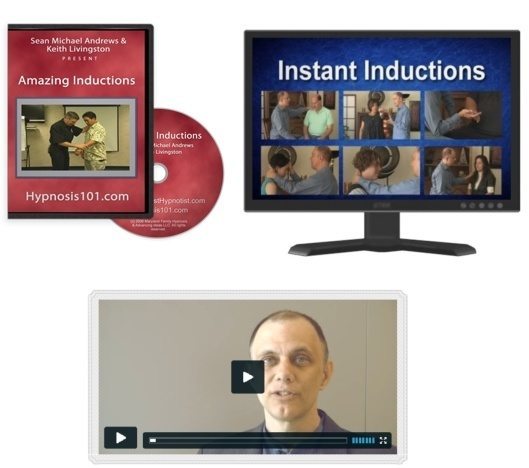Milton Erickson used a variety of approaches in inductions. He could be direct and authoritarian or indirect and permissive. He was famous though, for his permissive, indirect approach that involved permissive language.
Permissive Words
Here’s a short list to get you started…
- Can
- Might
- Maybe
- Perhaps
- Possible
- Allow
So, instead of “Relax deeply,” you might say “Perhaps you can relax deeply.”
Presuppositions
An Ericksonian approach often uses presuppositions that clients will both enter trance and get the changes they want. “Would you prefer to go into trance in the black chair or the red one?” “Don’t enter trance too quickly.” Those statements both presuppose the client is going to go into trance.
Evoking Trance
Rather than commanding people to enter trance (some strange, mystical state) an Ericksonian approach might suggest a client remember a time when they were experiencing something natural that might be interpreted as hypnotic. “You can remember the feeling of feeling like you were almost going to sleep, can you not?” It’s an approach that evokes or “draws out” past trance or trance-like experiences.
Utilization
Erickson often used whatever the client and environment offered rather than to try to force an induction along predetermined lines. “As you sit with your hands in your lap and your feet on the floor you may be aware of the sounds of the cars outside.” In short, use whatever happens. If there’s a loud noise during an induction, rather than trying to pretend it didn’t happen, include it. Maybe even use it for deepening.
Contextual Cues
When inducing hypnosis, it can be a good idea to give the client cues that something different is happening. When they move to the “trance chair,” and the lights go down, they know its time. Here are some ideas…
- Change the environment (lighting/seating)
- Change your voice tone (switch to your “hypnotic voice)
- Match the timing of your words to the client’s exhale (try it–it’s cool)
More Ericksonian induction tips…
Keith



Erickson really was the master at utilization
Thank heavens for Milton Erickson. I can’t hear enough about how he gently and naturally led people in to trance and the ease with which he communicated with people’s subconscious minds to create powerful internal changes.
Thanks for the these reminders!
-Horatio
Although complexities may be utilized, I have always preferred a simplified approach. When less yields more, one has a more effective and powerful method.
Through Erickson’s example, I have learned to take “advantage” of the surrounding environment and pay more attention to the little things about the client and their habits that are so useful in obtaining induction by way of an indirect approach.
I recently read a few of the books about Milton. I couldn’t put them down. I was even lucky enough with one to get a dvd with it that showed Milton working with a client.
Thanks for posting…it’s great to keep Milton’s work alive.